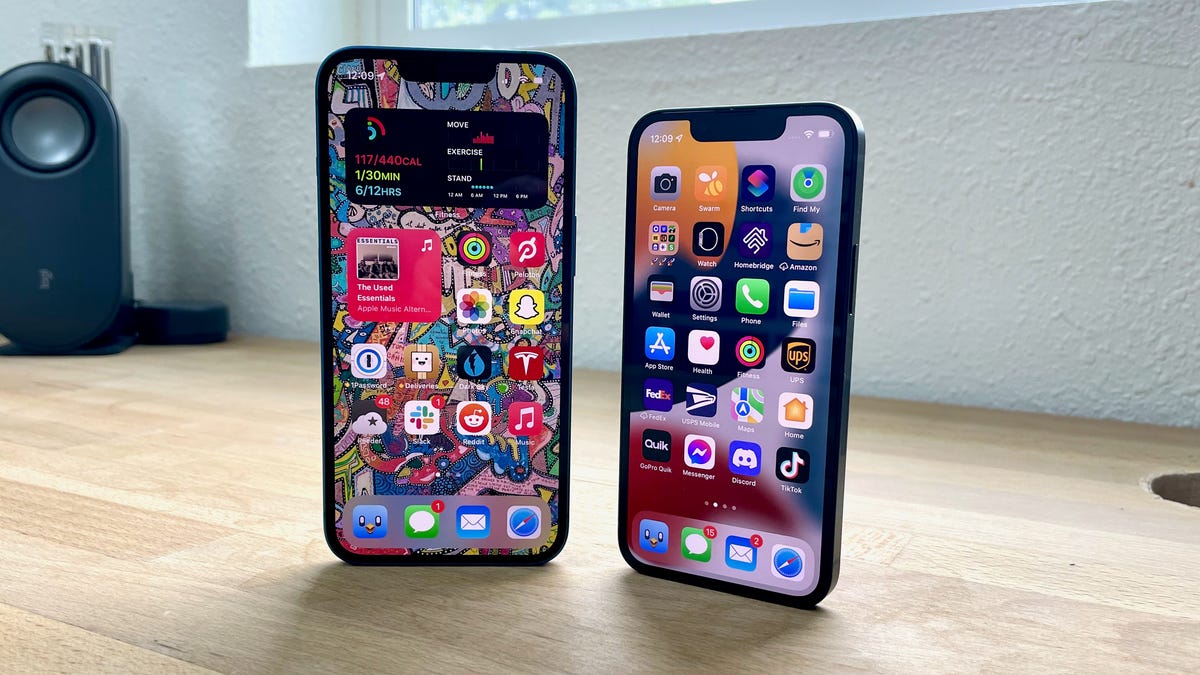- How to disable ACR on your TV (and stop companies from spying on you)
- I expected this cheap multitool to be a waste of money, but it's my new a toolbox essential
- Have The Last Word Against Ransomware with Immutable Backup
- Multi-channel Secure Communication
- Apple's bold idea for no-code apps built with Siri - hype or hope?
Apple retires iPhone 13 and iPhone 15 Pro models – what should you buy instead?

The iPhone 13 and iPhone 13 Mini.
Jason Cipriani/ZDNet
Apple has scrubbed two of its older model iPhones in the wake of Monday’s launch of the new iPhone 16 lineup. No longer up for sale are the iPhone 13 and the two Pro models of the iPhone 15. This leaves the iPhone 14, 14 Plus, 15, 15 Plus, iPhone SE, and of course, the new iPhone 16 models as your only options should you want to buy directly from Apple.
Also: iPhone 15 vs. iPhone 16: Should you upgrade to Apple’s latest model?
The retirement of the iPhone 15 Pro and Pro Max comes as no great surprise. When Apple launched the iPhone 15 series last year, it also jettisoned the Pro models of the iPhone 14. Retiring only the Pro flavors of the previous year’s phone is an attempt by Apple to push buyers who want a Pro version to grab the latest model. That’s as true this year as it was last year.
But, the exit of the iPhone 13 marks a significant milestone for Apple’s phone lineup. The iPhone 13 was the last model to include a physical SIM. The iPhone 14 and its predecessors are eSIM-only phones. For me, that’s perfectly fine. I’m not a huge fan of physical SIMs.
Having to pop open the tray and then juggle that tiny card is something I can do without. Plus, switching among eSIMs when traveling to another country is a pleasure compared to swapping different physical SIMs. But I’m sure many iPhone users prefer the old-style SIMs, especially since not all countries or carriers yet support eSIMs.
Also: eSIM vs. SIM: What’s the difference?
The iPhone 13 was also the last model to come in a mini version. Designed as an alternative to big phones, the iPhone 13 mini sported a svelte 5.4-inch screen, ideal for people who prefer their iPhones in a small size, and with a lower price tag. Now, Apple’s only small-screened option is the iPhone SE, with its 4.7-inch display.
The exit of the iPhone 13, iPhone 15 Pro, and Pro Max puts potential buyers in a quandary. What should you buy if you need a new iPhone and also want it directly from Apple?
If you crave a smaller phone and budget price, the iPhone SE is still a viable choice. However, with the current third-generation model launched in 2022, Apple may unveil the fourth-generation version next year. So you may want to wait to see if that product materializes.
If your budget is higher and you don’t mind an older model without the Pro features — the iPhone 14 and iPhone 14 Plus or iPhone 15 and iPhone 15 Plus would be solid choices. But keep in mind the lure of the latest features. Apple Intelligence, for example, will be available only throughout the iPhone 16 lineup, iPhone 15 Pro, and iPhone 15 Pro Max. If you want the new AI-powered tricks, especially the improvements headed for Siri, then one of the four iPhone 16 models is your only choice.
Also: The 5 best iPhone 16 Pro features that enthusiasts will care about
Typically, I’ve always gravitated toward the Pro models for their better displays, beefier cameras, and faster CPUs. Yet this year, the differences between the regular iPhone 16 and the iPhone 16 Pro/Pro Max are less significant than in previous years. The Pro and Pro Max boast larger screen sizes and slightly better camera features, but that’s about it. So if you want the latest model but don’t want to overspend, an iPhone 16 or iPhone 16 Plus would be the way go to.
Of course, although Apple has discontinued the iPhone 13 and iPhone 15 Pro models, they’re all still readily available elsewhere. You can easily find them through third-party retailers such as Amazon, eBay, Gazelle, and other sites that sell used phones.
A few months ago, I bought a used iPhone 13 through Amazon, which I use for testing and which has performed without a hitch. Consider all your options before you plunk down your hard-earned cash for your next iPhone.

